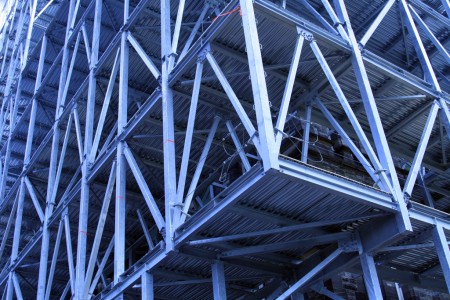
The climatic impact of aviation
At present, virtually all freight and passenger-carrying aircraft operate in one of two ways: burning kerosene to turn a propeller, generating thrust that the wings partially convert to lift, or generating thrust by burning kerosene in a jet engine. Virtually all of that kerosene is produced by refining petroleum. As such, burning it adds to the stock of greenhouse gasses in the atmosphere. These include carbon dioxide (CO2) (a basic product of the combustion) and other greenhouse gasses (GHGs), like nitrous oxide (NO2). It is also possible that aircraft have an effect on cloud formation (both by producing vapour trails and inducing cirrus cloud formation), but my understanding of the science is that scientists aren’t sure whether that has a net warming or a net cooling effect. The latest IPCC report says:
Moreover, the uncertainties on some aviation forcings (notably contrail and cirrus) are still high, such that the overall radiative forcing consequences of changing cruise altitudes need to be considered as a time-integrated scenario, which has not yet been done. (p. 355)
Helpfully, the report does identify that, if contrails prove to be a significant problem, they “can be easily avoided – in principle – by relatively small changes in flight level, due to the shallowness of ice supersaturation layers.” There is also some uncertainty about the relative emissions of short-lived but potent GHGs like nitrous oxide, compared with long-lived but less potent ones like carbon dioxide. All told, the report does conclude that aviation has a “larger impact on radiative forcing than that from its CO2 forcing alone.”
Carbon neutral possibilities
A couple of logical possibilities exist for making air travel carbon-neutral, though they differ in practicality. Electric planes are conceptually possible, and small versions exist. As I understand it, the big problem is storing enough energy in light enough batteries. My sense is that we are nowhere near being able to do this for large commercial aircraft. Similar issues exist for hydrogen aircraft, in term of storage, and there is the added question of where we get the hydrogen. To me, biofuels seem like the most plausible near-term option. That being said, there are technical issues to be overcome within aircraft themselves, such as the gelling of biofuels at the low temperatures found at high altitudes. While some airlines have tested multi-engine planes with a single engine running on a biofuel/kerosene mix, as far as I know nobody has flown such a plane exclusively using biofuels.
Additionally, not all biofuels are carbon neutral. Ethanol derived from corn might actually represent more greenhouse gasses than an equivalent amount of gasoline, once you factor in fertilizer production, emissions from farming and farm equipment, ethanol fermentation, etc. The same might be true of palm oil derived biofuels, given how their production can lead to the destruction of rainforests that are major carbon sinks.
My sense is that the air travel industry has yet to demonstrate that it will be able to exist in a carbon neutral world, regardless of how expensive tickets become. That being said, it does make sense to displace emitting activities in order from lowest cost to highest cost. If we can replace fossil fuelled ground vehicles with electric vehicles running on renewable power, we should do so first before pouring enormous effort into trying to produce a carbon neutral aircraft. That being said, there does seem to be a strong moral imperative to reduce emissions generally, including by limiting the amount of long-distance travel we undertake.
As usual, I expect any mention of aviation to produce a lively discussion.






